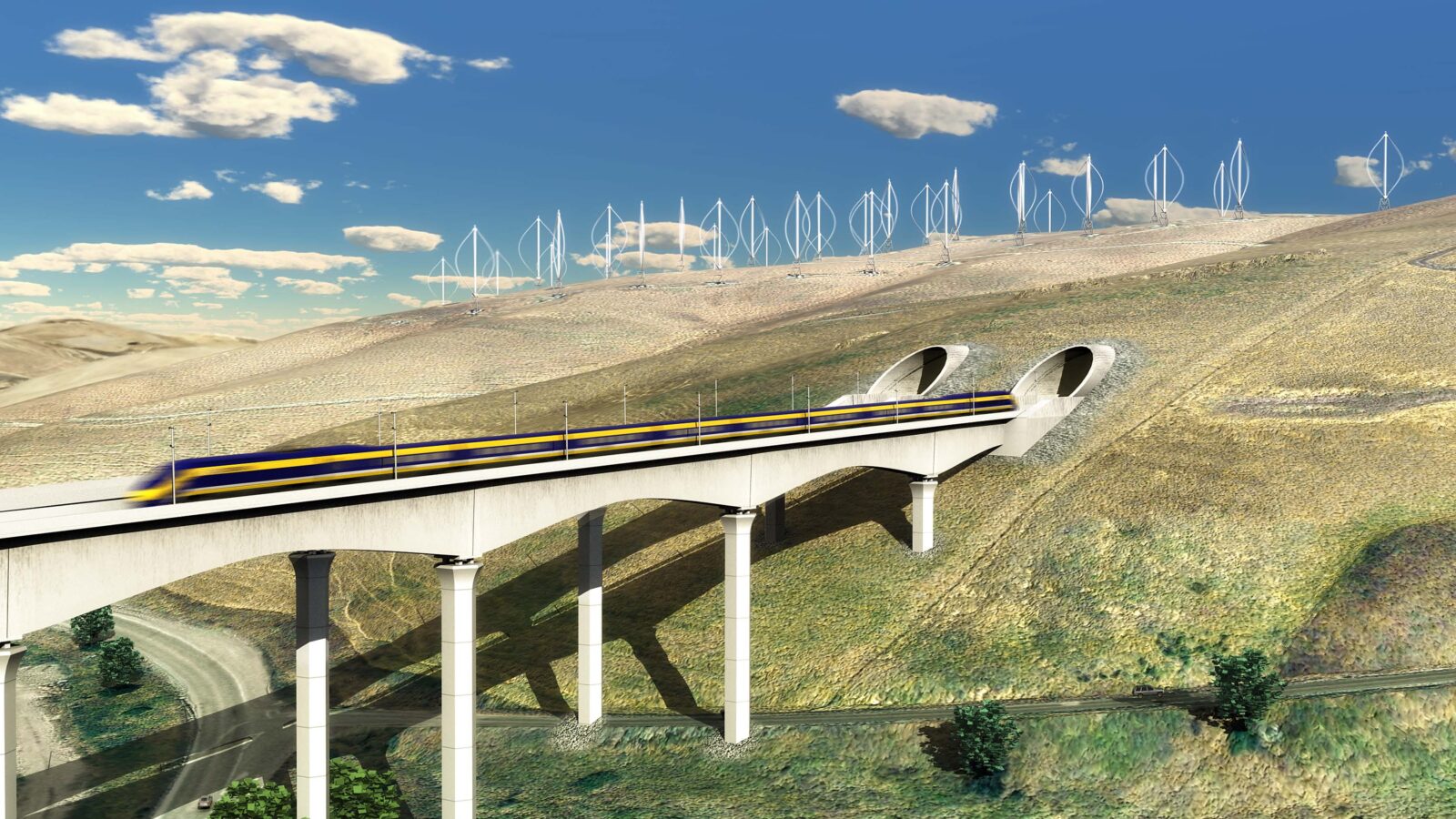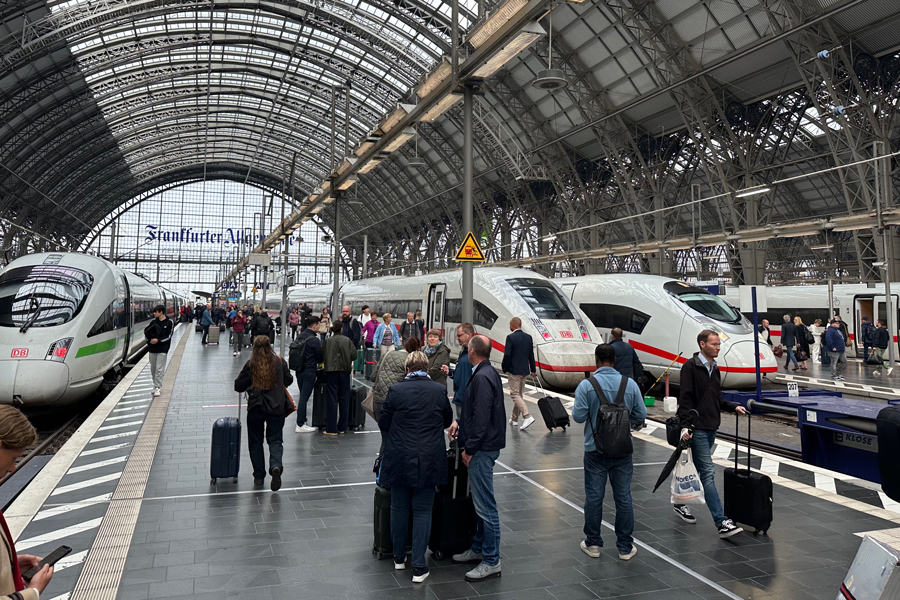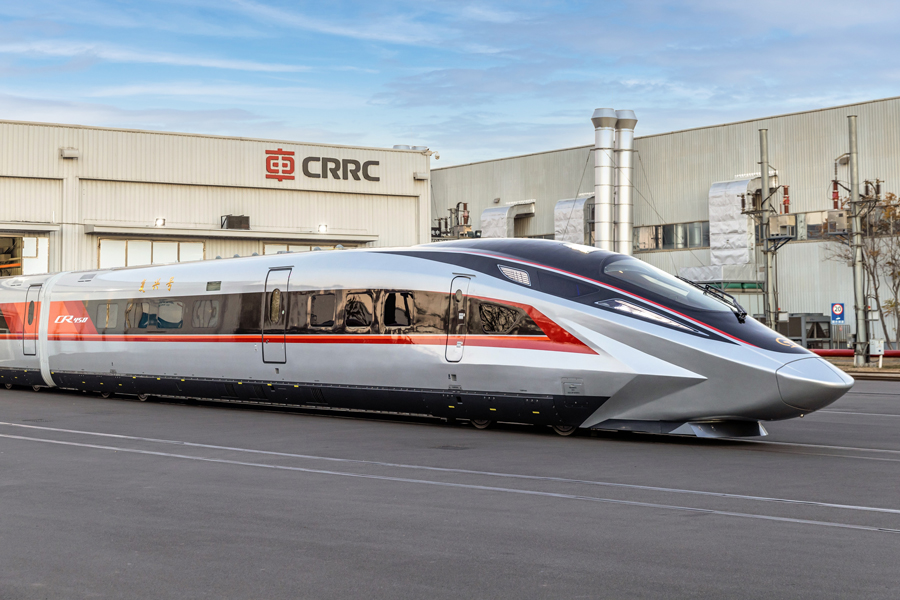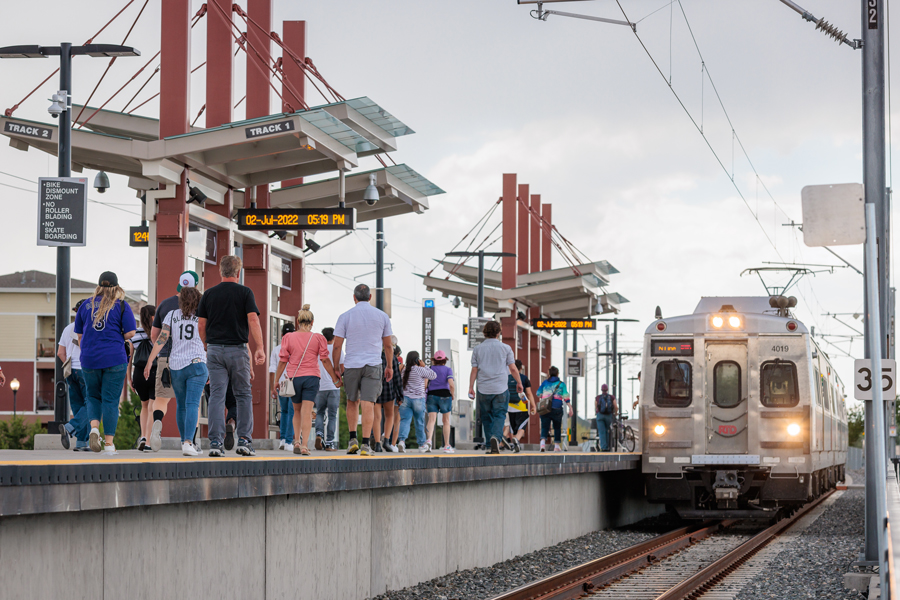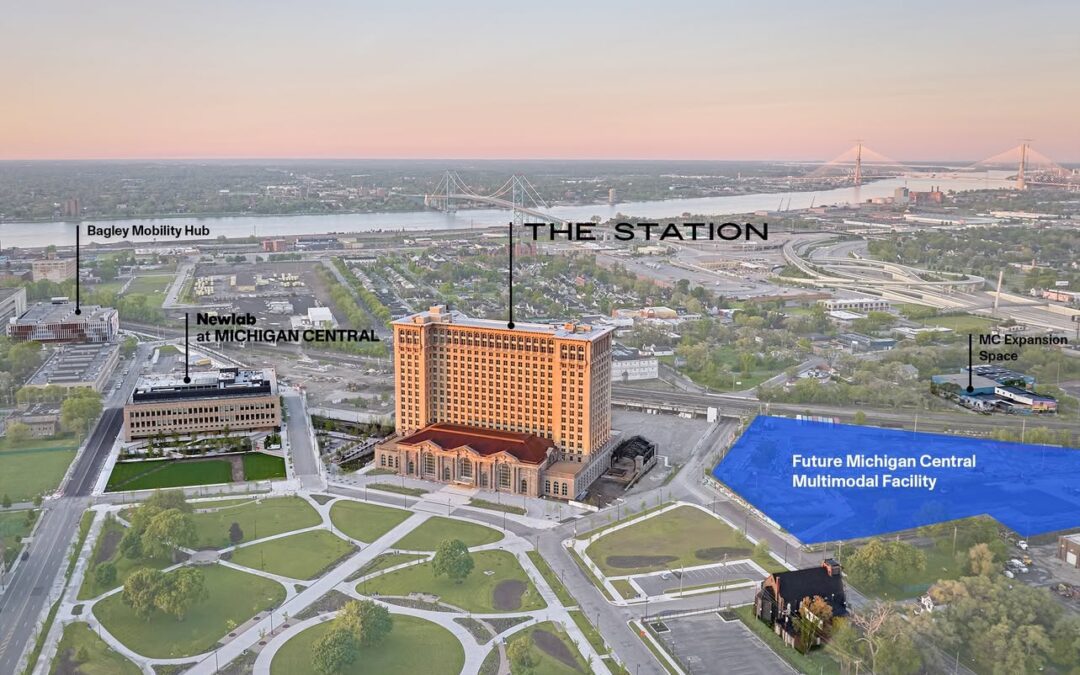At least one-third of Americans do not have access to a car that they could take on a road trip, according to a new study by the Natural Resources Defense Council – and as we’ll discuss, the percentage is probably greater than that. Yet for decades, civil engineers...
The great Bakersfield-Palmdale dilemma is finally solved
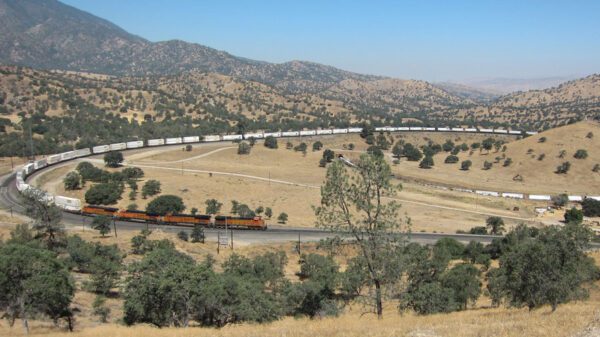
The current route through the Tehachapi Mountains is not fit for passenger trains but it does include the famed Tehachapi Loop for freight trains. Credit: Don Barrett https://flic.kr/p/cAjLXw
Exciting news: One of the great dilemmas in the American railroad industry has been solved at long last.
Planners have gotten approval for a passenger-rail route through California’s Tehachapi Mountains—a huge obstacle to passenger trains for generations.
The current route between Bakersfield and Palmdale is too full with BNSF and Union Pacific freight trains to add passenger trains. And, it’s incredibly curvy. At one point, it doubles back on itself. A passenger train on this route would take more than 3 hours, versus 1.5 hours for driving.
The California High Speed Rail Authority’s proposed Bakersfield-Palmdale segment solves the problem by tunneling through the mountains, which slashes the trip time to about 25 minutes on a high-speed train.
The approval of the plan by the CHSRA’s board of directors last week clears the way for preliminary work to begin. It also positions the project to be eligible for federal infrastructure funding. That means a passenger-train connection between the San Joaquin Valley and Southern California—a route that’s been urgently needed for decades—could become a reality.
Breaking new ground
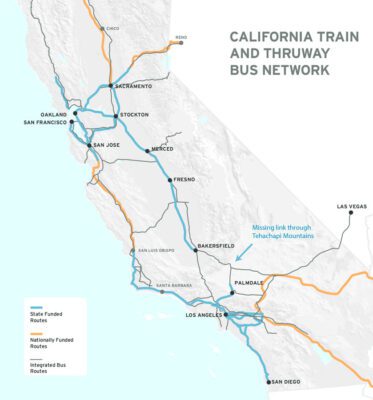
Bakersfield – Palmdale is the missing piece to connect the Central Valley to Southern California, Las Vegas and beyond.
The Bakersfield-Palmdale line is the critical link between Northern California and the Central Valley to Los Angeles, San Diego and Las Vegas.
Brightline plans to connect its Las Vegas to L.A. high-speed line to California HSR at the Palmdale station. Which means travelers will funnel into the Brightline system from not only Southern California but also the Central Valley and Northern California—and vice versa.
The chosen route extends south and southeast from the Bakersfield Station. The Authority’s plan calls for building nine tunnels—totaling 10 miles—through the Tehachapi Mountains. The total cost of the segment is an estimated $19.7 billion.
The tunneling required for the Tehachapi Mountains portion of the line accounts for a substantial share of the overall cost. But, as Streetblog notes, even with tunneling costs, building the HSR segment will be less expensive than many highway expansion projects. For example, it will cost roughly $240 million per mile to build, versus $400 million per mile for a recent expansion of the lower 710 Freeway in L.A.
In addition to Brightline HSR, the station at Palmdale will have connections to several other transportation modes.
Last year, Palmdale’s City Council approved a plan for developing the station. It reflects California’s hope that HSR will drive sustainable growth throughout California. Palmdale’s mayor noted that “the concept is to have all the different modes—California High-Speed Rail, Metrolink, local transit, Brightline West, Amtrak, Greyhound and future light rail—in one location. This plan will accomplish that and more. It will help create a vibrant city center that will be an important part of our future.”
Moving it to construction
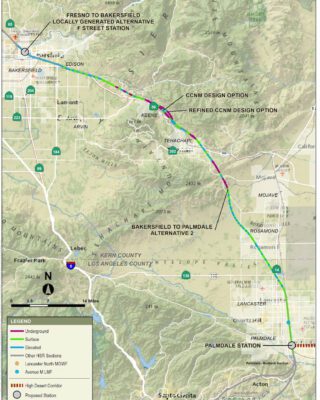
This 83 mile modern rail line, between Bakersfield and Palmdale, was approved Aug. 19, 2021, by the California High-Speed Rail Authority.
Funding remains an open, critical question for both the Central Valley line currently under construction and the Bakersfield-Palmdale segment.
In the Central Valley, the California High Speed Rail Authority has enough funding for 119 miles of the line, but the full Merced-Bakersfield line would run roughly 171 miles. The Authority is currently in a struggle with the state legislature over $4.2 billion in voter-approved bond funding that would allow it to build the full line.
Some legislators are attempting to divert that money to other projects in Southern California. Streetsblog recently accused them of attempting to “kill” high-speed rail in California.
The fate of the Bakersfield-Palmdale segment will remain uncertain until that issue is resolved. Gov. Gavin Newsom’s ongoing recall election adds another layer of uncertainty. But two bills that contain potentially massive funding for trains—backed by the Biden administration and now being worked on in Congress—could be a tipping point for securing funds to complete the Central Valley line and begin work on the Bakersfield-Palmdale segment.
Whether you live in California or not, please contact your representatives and tell them to support the maximum possible level of funding for trains generally—and high-speed rail in particular—in the bills moving through Congress.
What happens with California’s high-speed rail project could transform America’s transportation priorities. And the reverse is especially true right now: What happens at the national level could determine what happens in California.
The Latest from HSRA
Our Latest Blog Posts
Check out the latest news, updates, and high speed rail insights from our blog!
